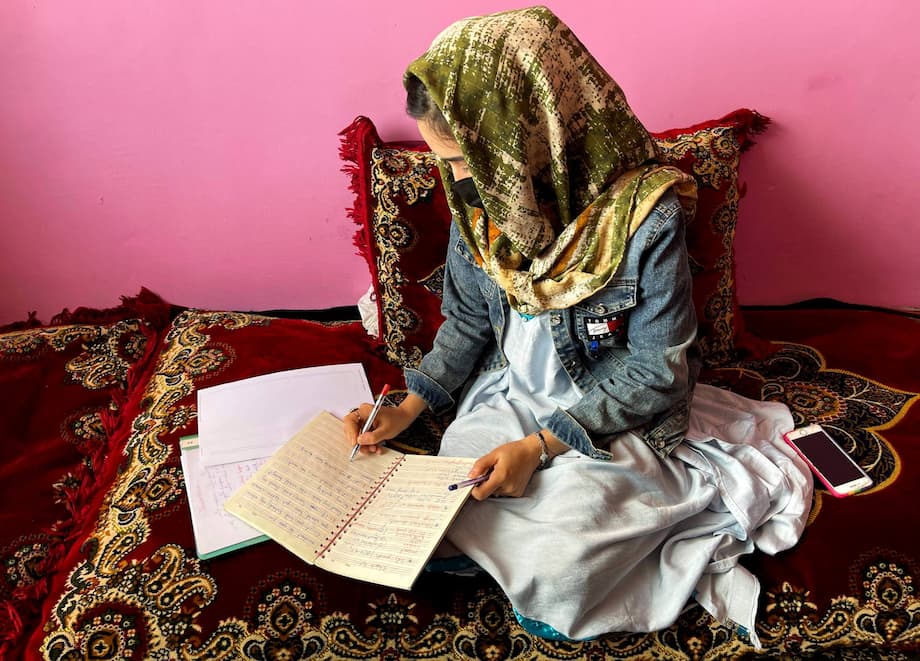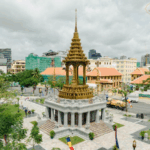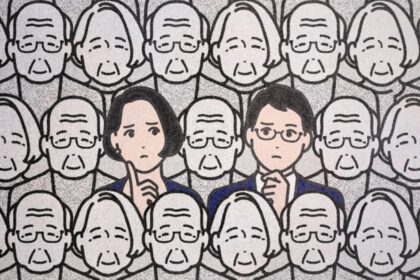A sudden blackout that targets connectivity
At 7pm on a recent evening in Afghanistan, 17-year-old Marjaneh stared at a blank laptop screen where her online English class should have been. The wifi in her neighborhood had vanished without warning. For a teenager barred from school, the internet had been the last thread connecting her to lessons, classmates, and a future she still hoped to claim.
- A sudden blackout that targets connectivity
- How Afghanistan’s internet works and why fiber matters
- Education lifelines cut for a generation of girls
- Women’s work and independent media under fresh strain
- International reaction and human rights concerns
- If mobile data goes next
- What options remain for students and teachers
- Key Points
Marjaneh, who asked to use a pseudonym for safety, said the decision cut deeper than a missed lesson. She had planned to apply for scholarships and train as a doctor. That plan depended on steady connections and steady hope. She described the feeling of watching both slip away.
She explained her loss in plain terms before the line dropped again.
“These online classes were my only source of hope. I thought when they closed schools at least they would not cut the internet, but now that has been taken away too.”
The blackout began on September 15 when the fiber optic link to Balkh province was cut. In the days since, fixed broadband has been shut in other regions too, including Helmand, Kandahar, Uruzgan, Nimroz, Zabul, Baghlan, Takhar, Kunduz, Badakhshan, Herat, and Parwan. The measure, justified by Taliban leader Hibatullah Akhundzada as a step to prevent immorality, coincided with the fourth anniversary of the ban on girls attending secondary school. Officials have indicated they are weighing a wider shutdown that could include mobile data through telecommunications companies, sparking fears of a nationwide blackout.
Local authorities in several northern provinces, including Balkh, Kunduz, Badakhshan, Takhar, and Baghlan, have confirmed fiber optic bans. Residents in other provinces report severe disruptions. The cuts are not uniform, and mobile data still works in many places. Yet for many families, the change has already ended online education, disrupted business, and severed vital social ties.
How Afghanistan’s internet works and why fiber matters
Afghanistan’s modern internet backbone was built through a national fiber optic network that began in 2007 with donor funding of around 60 million dollars. The system grew to nearly 6,000 miles of cables that linked 26 provinces to global networks. By last year, about 26 million Afghans had access to telecommunications. Fiber offered the fastest and most cost-effective connections for homes, government agencies, banks, and businesses.
Cutting fiber leaves households and institutions leaning on mobile data. That shift is slow and costly for live classes, video calls, cloud services, and financial transactions. Network monitoring groups have tracked steep drops in traffic in affected provinces, and local business leaders warn that a prolonged fiber outage will strain already fragile public services and the private sector. A former Afghan education minister, Sayed Ahmad Shah Sadaat, has been blunt about the stakes for daily life and administration.
“Cutting the fiber optic network will harm all areas of life. Government agencies, banks, and media do not have a viable alternative in place.”
Education lifelines cut for a generation of girls
When girls were barred from classrooms and universities, learning moved to living rooms and phones. Thousands of Afghan girls enrolled in online programs that replaced classrooms, libraries, and study groups. One online provider reported 17,000 Afghan students across 15 subjects joining classes from home. The fixed broadband shutdown has jeopardized that entire ecosystem.
Maryam, 17, from Takhar province, had been studying coding and graphic design and preparing for the Test of English as a Foreign Language. When fiber went dark, she tried to continue by phone. The class broke apart in glitches and delays.
Her experience matches what many students say: laptop-based courses require stable connections, and mobile data does not meet that standard.
“The teacher’s voice kept cutting in and out. For coding you need a stable computer connection; without it, the whole lesson collapses.”
Her family used to pay 1,100 afghanis per month for unlimited wifi. Data packages cost roughly twice that and run out in days. In a country where most households live on less than 2,200 afghanis a month, the math does not work. In Baghlan, 21-year-old Sonia said she bought 5 GB of data for 400 afghanis and it lasted two weeks. Her brother’s wages support the entire family. She said a steady budget for data is impossible.
Connectivity was also about morale. For law student Roweida, 25, in Balkh, nightly online meetups were a lifeline.
“It was not just about classes. It kept our spirits alive. Every night we met on Google Meet and hearing each other’s voices gave us hope. When the internet went, it felt like the roof had fallen on us.”
Rules and social norms limit access in other ways. In provinces such as Kandahar, girls often cannot buy a SIM card without a male relative. That means the fallback to mobile data does not exist for many female students. Others fear scrutiny for using devices in public or even at home during lockdowns, which interrupts learning and social support networks.
Mobile data is a fragile stand in
Mobile internet remains in many areas, but it is slower and more expensive than fiber. Video lessons stutter, uploads fail, and instructors struggle to keep classes coherent. Live coding, science labs, and language courses that depend on conversation and screensharing do not translate to unstable mobile links. Data packages expire fast, and families burn through their budgets trying to keep a few classes running each week.
Teenagers who had mapped out timelines for TOEFL, coding bootcamps, and scholarship applications now face indefinite delays. Offline materials and preloaded videos help for some subjects, but they do not replace feedback, conversation, and deadlines that keep students moving. For many girls who already lost physical classrooms, losing the online option feels like losing the future again.
Women’s work and independent media under fresh strain
Beyond classrooms, the blackout is hitting livelihoods. Women running small enterprises, from tailoring to embroidery, rely on social media and messaging apps to reach customers, take orders, and receive payments. In Kandahar, groups of women who sell long embroidered dresses and other crafts say they now switch on short, expensive data bundles all day just to stay reachable. What once cost a reasonable monthly fee has tripled.
A tailor in northern Afghanistan who employs widows and women in need said the workshop’s sales depend on connectivity. She asked to be identified by her family name, Dawrani. Without fiber, her staff cannot keep up with orders.
“If I cannot even earn this small piece of bread, I will be forced to leave this country.”
The information space is shrinking too. Afghanistan once had a vibrant media environment with hundreds of outlets. Since 2021, many have closed or relocated. Women’s voices have been largely removed from broadcasting, and nearly all content now requires approval by authorities. The United Nations has recorded hundreds of arbitrary arrests and detentions of journalists and media workers since the change in power.
Press freedom advocates warn that pulling the plug on fixed broadband, on top of these limits, fatally handicaps newsgathering and public oversight. A leading watchdog argued the decision represents a severe escalation of censorship, undermining the public’s right to information and making it harder for journalists to work safely.
Official justification and growing pushback
Officials in several provinces have said the cuts were ordered to guard morality. A spokesperson for the governor of Balkh, Haji Attaullah Zaid, explained the position and suggested the government may build a homegrown alternative.
“This action has been taken to prevent immoral activities, and an alternative solution will be developed within the country to meet necessary needs.”
Critics inside Afghanistan say morality is a pretext for control. Kabul-based academic Obaidullah Baheer said the policy matches earlier restrictions that chipped away at women’s rights and public space.
“It shows a very anti modern version of the Taliban. It seems their fight is against modernity, and they fit the label used by people who called them draconian.”
Religious scholars also object. Fazl al Hadi Wazin, a member of the International Union of Muslim Scholars, said restraint on harmful content is one thing, but shuttering the entire internet cannot be defended on religious grounds.
“The Taliban can restrict access to harmful content, but completely cutting off the internet is not justified. It deprives the nation of an essential tool for progress.”
Even as local media contracts, officials and supporters continue to post to global platforms, maintaining verified accounts and reaching large audiences. Foreign influencers have been invited to showcase travel in Afghanistan. That dual track, critics argue, elevates positive messaging outward while limiting the voice of Afghans, especially women, at home.
International reaction and human rights concerns
Global condemnation has mounted. The Malala Fund called the order to cut fixed internet another attack on the rights of Afghans, especially women and girls already banned from secondary school, university, and most employment. The organization said online learning had been one of the last lifelines available to girls locked out of classrooms.
“Shutting down the internet is the Taliban’s latest attempt, under their system of gender apartheid, to cut Afghan women and girls off from the world. Without reliable access, they cannot reach courses or connect with peers and teachers.”
Officials in Washington said the restrictions are very concerning and will harm ordinary Afghans and the economy. A spokesperson warned that blackouts will further isolate the country just as families struggle with high unemployment and food insecurity.
“Limiting fiber optic internet access will negatively affect Afghans’ daily lives and economic activity. The move risks deepening isolation and worsening hardship.”
Afghan legal scholars and activists are also appealing for practical solutions, including emergency connectivity that does not depend on local fiber. One Afghan legal scholar who connects and counsels women online described the shutdown in stark terms.
“Living in a land of darkness, the internet is the only light that helps us survive without choking. Without it, little remains for Afghan women.”
Humanitarian agencies and civil society groups warn that losing fixed internet also undermines service delivery, case management, and coordination. Remote work that sustained many women since 2021 becomes harder to maintain. The blackout affects diaspora families trying to stay in touch and sponsor relatives, and it blocks the flow of information that aids accountability and relief.
If mobile data goes next
For now, mobile data continues to function in many areas. Officials have suggested they are considering an extension of internet limits to services offered by telecom companies. If that happens, homes, schools, and businesses in large parts of the country would be left without any practical way to get online.
That scenario would choke off e commerce, remote education, and digital payments, and it would stall banking and government services that rely on online systems. Many families depend on remittances and online jobs to cover food and rent. A deeper shutdown would sever these lifelines. The longer it lasts, the harder it becomes to recover students’ progress, family incomes, and public services.
What options remain for students and teachers
Some teachers and volunteers are trying to bridge the gap with offline content, delivering lessons on memory cards or USB drives. These materials keep students reading and practicing, but they cannot replace interactive classes, real-time feedback, or exams that require a live connection. They also cost money most families do not have.
Grassroots networks formed after 2021, linking Afghan girls to teachers abroad through encrypted apps and safe schedules. Coordinators report losing contact with many students since fiber went down. Even where mobile data still works, its cost erodes participation and pushes the poorest girls out first.
Education groups and donors are weighing options: scholarships abroad, emergency grants to cover data costs, and partnerships to deliver high quality offline study packs for core subjects and language courses. Local organizers are expanding mental health support, peer groups, and safe community study circles where feasible. Any approach must prioritize safety, reduce costs for the poorest households, and preserve teachers’ ability to monitor progress and keep students engaged.
The coming weeks will test whether Afghan girls can keep learning without reliable connections. Teachers can adapt curricula to low bandwidth and offline formats. Sponsors can underwrite data for the neediest families. Universities can hold flexible deadlines for Afghan applicants whose access has been curtailed. Without concrete support, a generation that fought to keep learning will slip further behind.
Key Points
- Fixed broadband was shut off in several provinces starting September 15, with confirmed bans in parts of the north and reports of wider disruptions elsewhere.
- Taliban leaders cite morality for the cuts and have signaled that mobile data could be restricted next.
- Afghanistan’s fiber optic network, built since 2007 and spanning nearly 6,000 miles, linked 26 provinces and supported banks, agencies, and schools.
- The blackout has hit girls’ online education hardest, ending live classes and cutting off peer support across provinces.
- Families who paid around 1,100 afghanis monthly for wifi now face data costs that can double and expire within days.
- Women-run businesses that sell crafts and clothing online report tripled connectivity costs and lost orders.
- Press freedom has tightened since 2021; hundreds of arrests and detentions of media workers have been recorded, and a broadband ban further restricts reporting.
- International voices, including the Malala Fund and the US State Department, have urged the restoration of internet access.
- Religious scholars argue there is no basis for shutting the internet entirely; critics call the move a tool of control.
- If mobile data is cut, Afghanistan faces near total digital isolation that would stall education, commerce, and critical services.












